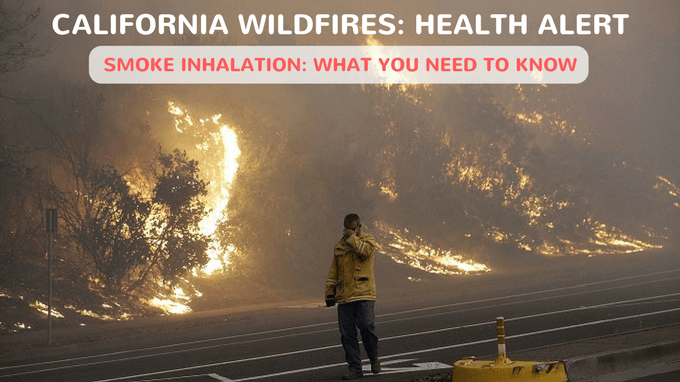


The California wildfires have been devastating to say the least, and has topped $10 billion in total damage. The loss of property is disastrous, but what is also concerning right now is that these wildfires have emitted a lot of smoke into the air.
The California wildfires are not only burning trees and shrubbery, but people’s homes and property as well. Thus, the smoke being produced is a complex mixture of gases and fine particles of wood, as well as fumes from other materials like paint, metal, batteries, and other products commonly found in buildings and homes. The biggest health threat from smoke is from particulate matter (PM), which is invisible to the human eye. These microscopic particles can cause a range of health problems, from burning eyes and a runny nose to aggravated chronic heart and lung disease. Exposure to particle pollution is even linked to premature death because it can infiltrate deep into your lungs, reaching the alveoli and affecting the bloodstream.
People suffering from heart or lung disease.
A diabetic person, as they have the chance of developing an underlying cardiovascular disease.
Pregnant women, as prolonged exposure to smoke inhalation may affect the developing fetus leading to premature births and low birth weights in infants.
It’s important to protect yourself from smoke in order to avoid health risks. Here are some steps to reduce exposure to smoke inhalation hazards.
If you can leave the area, then go and stay with friends or family who live far away from the smoke.
Consult your health care provider. Discuss when to leave the area, how much medicine to have on hand, and your asthma or COPD action plan if you suffer from any of these diseases.
Make use of air cleaners and filter devices – often marketed as HEPA - to remove indoor air pollution. You can also use personal protective equipments (PPE), like respirators and P-100 masks to reduce the effect of hazardous smoke.
Lastly, pay attention to the air quality alerts that are available through local news media, and your state agencies.
There are many painful side effects of smoke inhalation. Moreover, if you have a lung disease or face an elevated risk of heart attack, then it’s better to proceed to a safer area and get medical attention. Nevertheless, consult your health care provider if you experience the following effects of prolonged smoke inhalation:
These symptoms can easily be treated or analyzed with medical help, like receiving oxygen or getting a bronchoscopy.
Share Your Valuable Thought